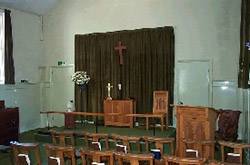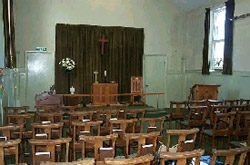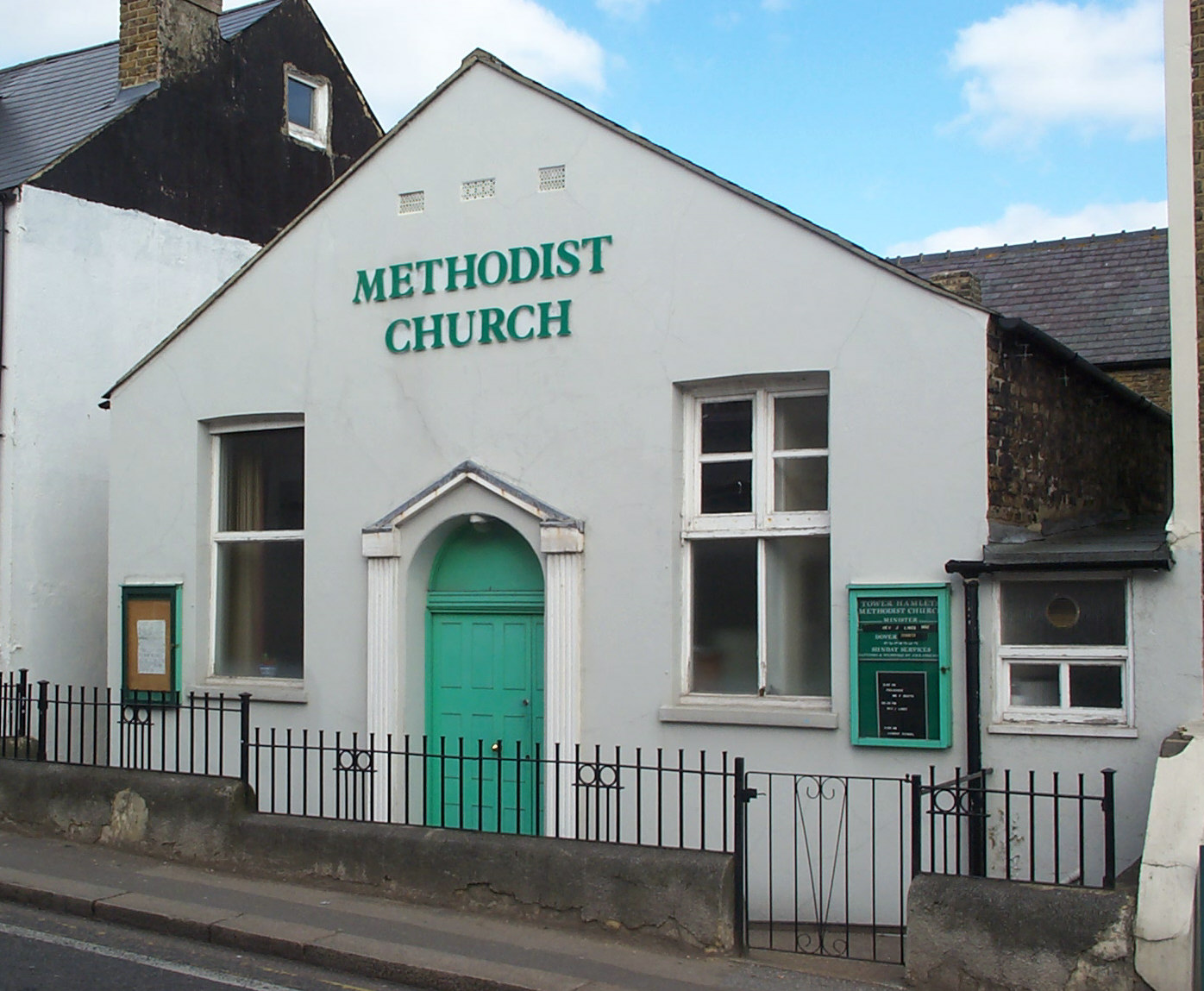Tower Hamlets Methodist Church - witnessing for more than 150 years
In 2000, when the Tower Hamlets church celebrated its 150th anniversary, former school teacher and Methodist church member Phil Brockman produced a book on the history of the church.
His wife Sue was a lay pastoral assistant with the Methodist Church, and had been much involved with the life of Tower Hamlets.
Mr Brockman recalled that in the early 1800s, the area was practically deserted except for an odd herdsman's hut and a few brickmakers' cottages. Its only distinguishing feature was a brick tower built to supply water.
On 9 April, 1849, premises in Tower Street were first registered as a place of religious worship. "The exact location is unclear, but it was probably near the present church," said Mr Brockman.
John Bavington Jones, in his book Annals of Dover, states that Tower Hamlets Wesleyan Chapel was built in 1850, and W Bachellor, writing in The Guide to Dover in 1853, says its principal object was "to provide Sabbath-day instruction for the offspring of the residents of the locality".
"The School is attended by upwards of 100 children, and Public Worship is held on Sunday evenings commencing at six."

The site for the church had been given by Dover Mayor Steriker Finnis who laid out much of the Tower Hamlets district. He also "contributed liberally" to the cost of the chapel's construction, which was said to be the first provision for the "moral improvement" of the inhabitants of Tower Hamlets.
Throughout the church's history, the Sunday School has played an important part, and thousands of children have passed through its doors over the years. In 1879 the number of scholars reached an all-time high of 231, with 25 teachers.
Not all has gone smoothly, of course. In 1868, the Sunday School Superintendent called for one boy to be dismissed because of his bad behaviour. The Teachers' Meeting decided his behaviour did not warrant dismissal, so the Superintendent resigned!
And in 1871, there was a big debate about whether the children should kneel or stand for prayer.
In 1870 a number of the Sunday School children died as a result of an epidemic of scarlet fever which swept through the town.
Throughout its history, there have been constant pleas for more teachers to help with the Sunday School work.
 Those who responded have included a number of people who were very loyal to their calling. "Granny" Newlyn, for example, became a teacher in 1868 and continued her work until 1933.
Those who responded have included a number of people who were very loyal to their calling. "Granny" Newlyn, for example, became a teacher in 1868 and continued her work until 1933.
Sister Bessie Johncock died in 1947 after giving more than 25 years' service to the church. During the war years, she had continued the work with the children who had not been evacuated by holding classes in the caves at the bottom of the hill.
More recently, sisters Winnie and Edith Seelly, who both died in 2003, had been stalwart members of the church, and particularly with the Sunday School. Winnie, who was also an organist, had become a teacher in 1925 and Edith served as assistant superintendent and then superintendent from 1955.
After the church closed in 2003, planning permission was given for the building to be re-developed, and it has now been converted into homes.
